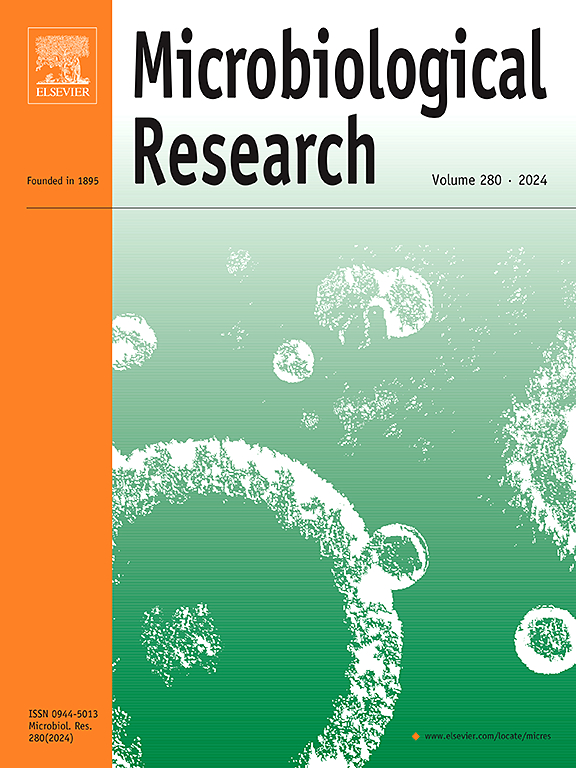The GlnE protein of Azorhizobium caulinodans ORS571 plays a crucial role in the nodulation process of the legume host Sesbania rostrata
IF 6.1
1区 生物学
Q1 MICROBIOLOGY
引用次数: 0
Abstract
The GlnE enzyme, functioning as an adenylyltransferase/adenylyl-removing enzyme, plays a crucial role in reversible adenylylation of glutamine synthetase (GS), which in turn regulates bacterial nitrogen assimilation. Genomic analysis of Azorhizobium caulinodans ORS571 revealed an open reading frame encoding a GlnE protein, whose function in the free-living and symbiotic states remains to be elucidated. A glnE deletion mutant retained high GS activity even under nitrogen-rich conditions. However, a reduction in growth was observed for the mutant strain at lower NH4+ concentrations than for the wild-type strain. Furthermore, the ΔglnE mutant strain showed reduced motility on ammonium-containing media. Inactivation of GlnE led to an increase in root adhesion, biofilm formation, and nodulation on Sesbania rostrata. Nevertheless, the nodules induced by the glnE mutant strain were ineffective. In addition, A. caulinodans GlnE played a significant role in enhancing resistance against environmental stresses, such as heat, heavy metals, and cumene hydroperoxide. This study demonstrates that GlnE plays multiple regulatory roles in A. caulinodans beyond nitrogen metabolism and is essential for establishing symbiotic relationships with host plants.
在豆科植物寄主田葵(Sesbania rostrata)的结瘤过程中,氮根根瘤菌(Azorhizobium caulinodans) ORS571的GlnE蛋白起着至关重要的作用。
GlnE酶是一种腺苷基转移酶/腺苷基去除酶,在谷氨酰胺合成酶(GS)的可逆腺苷基化过程中起着至关重要的作用,从而调节细菌的氮同化。通过基因组分析,我们发现枯氮hizobium caulinodans ORS571具有一个编码GlnE蛋白的开放阅读框,其在自由生活和共生状态下的功能尚不清楚。glnE缺失突变体即使在富氮条件下仍保持高GS活性。然而,在较低的NH4+浓度下,突变菌株的生长速度比野生型菌株有所下降。此外,ΔglnE突变菌株在含铵培养基上的活动性降低。GlnE的失活导致田菁根部黏附、生物膜形成和结瘤增加。然而,由glnE突变株诱导的结节是无效的。此外,茎叶草GlnE对高温、重金属、过氧化氢异丙苯等环境胁迫的抗性也有显著增强作用。该研究表明,GlnE在茎叶草中除氮代谢外还发挥着多种调节作用,是与寄主植物建立共生关系的必要条件。
本文章由计算机程序翻译,如有差异,请以英文原文为准。
求助全文
约1分钟内获得全文
求助全文
来源期刊

Microbiological research
生物-微生物学
CiteScore
10.90
自引率
6.00%
发文量
249
审稿时长
29 days
期刊介绍:
Microbiological Research is devoted to publishing reports on prokaryotic and eukaryotic microorganisms such as yeasts, fungi, bacteria, archaea, and protozoa. Research on interactions between pathogenic microorganisms and their environment or hosts are also covered.
 求助内容:
求助内容: 应助结果提醒方式:
应助结果提醒方式:


